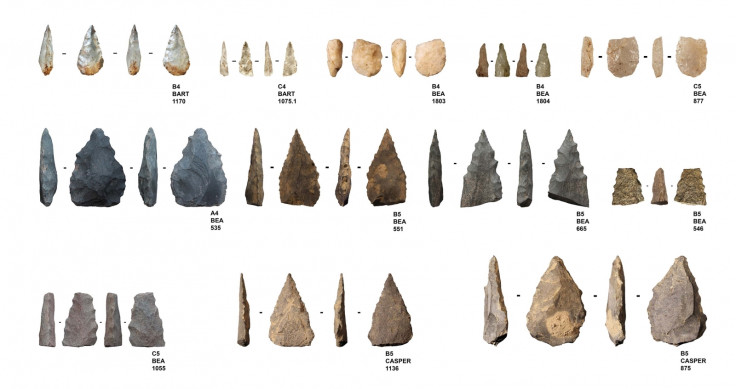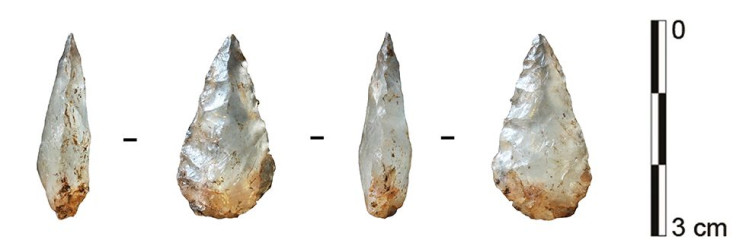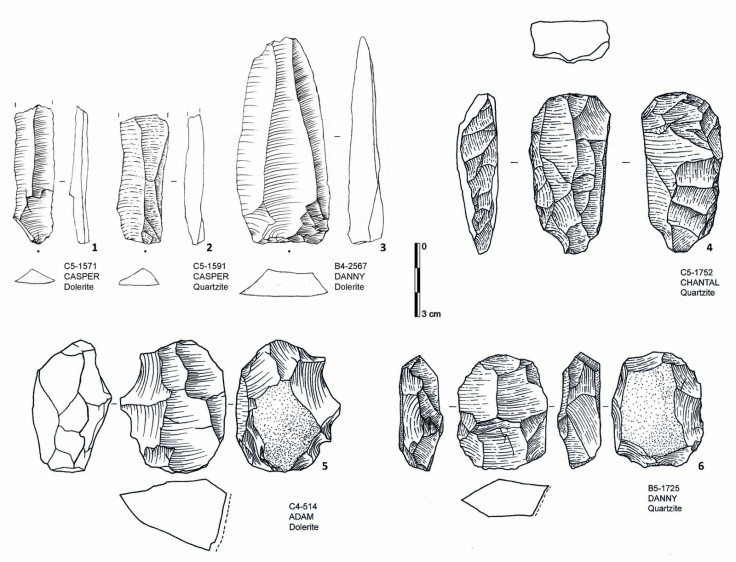These 77,000-year-old stone tools are the oldest, most sophisticated ever discovered in South Africa
The stone points are thought to have been used as tips for arrows or spears.

Precisely honed lethal stone tools have been discovered in the Sibudu Cave in South Africa dating back to the Middle Stone Age in the region.
The first anatomically modern humans are known to have used stone-tipped tools. Sophisticated methods to hone sharper and more deadly stone weapons is thought to have come much later.
Now archaeologists have found evidence of carefully prepared stone spear and arrow tips as old as 77,000 years. The previous earliest stone tools of this kind at the site were 65,000 years old. The results are published in a study in the journal PLOS ONE.
The weapon tips were discovered in cave, a rock shelter that sits on a west-facing cliff 20 metres over the uThongathi River in KwaZulu-Natal. It is 40 km (25m) north of the city of Durban and about 15km (9m) inland, near the town of Tongaat.
The excavation showed that heat and pressure had been used to create the lethal stone weapons, making them the earliest examples for this kind of technology in the region.
A total of 25 fragments of stone tips were found in the cave, with 14 of them showing evidence of having been used in hunting. They showed wear and tear from impact and residues of animal flesh. It is thought they were probably tied to a stick to make a spear or an arrow.
"Thanks to the excellent preservation at Sibudu Cave, a wide range of animal, plant and mineral residues were observed in direct relation with diagnostic wear patterns," the authors, led by Veerle Rots of the University of Liège in Belgium, write in the paper.
"The combination of technological, wear and residue evidence allowed us to confirm that the serration was manufactured with bone compressors and that the serrated points were mounted with a composite adhesive as the tips of projectiles used in hunting activities."

This shows that a period of major technological advancement in early human societies happened significantly earlier than previously thought. This could have been linked to wider changes in human societies of the time, such as new social organisations and cognitive frameworks for understanding the world, the authors write. The stone tools can be used to form an essential basis for expanding our knowledge of the past.
"The suite of technological and functional data pushes back the evidence for the use of pressure flaking during the Middle Stone Age and highlights the diversity of the technical innovations adopted by southern African Middle Stone Age populations," the authors conclude.

© Copyright IBTimes 2025. All rights reserved.






















